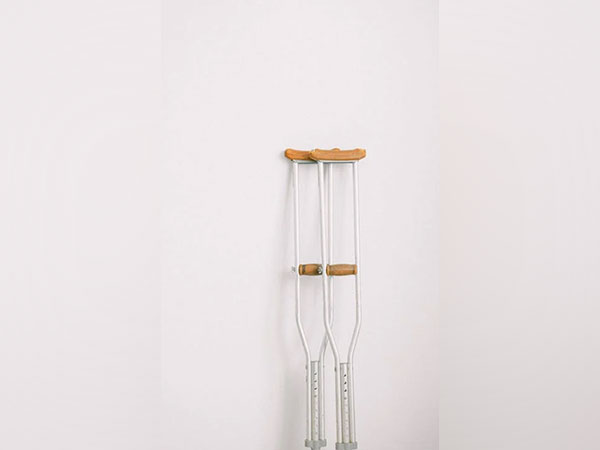

According to a new study led by experts at the University of Hong Kong, osteoporotic hip fracture, already a risky and crippling issue for elderly men and women globally, is poised to worsen as the population ages and becomes more feeble. According to the study, men and people over 85 years old are at particularly high risk for osteoporosis and fractures, which highlights the need for greater research, prevention, and treatment.
The research was presented today at the American Society of Bone and Mineral Research’s annual meeting in Austin, Texas, by Associate Professor Ching-lung Cheung of the University of Hong Kong‘s Department of Pharmacology and Pharmacy.
The study looked at information from 19 nations for patients 50 and older who suffered hip fractures between 2005 and 2018. It was discovered that in 18 of the 19 countries, an overall rise in the number of hip fractures was anticipated over time. Using estimated population sizes from the World Bank, hip fracture rates were predicted for 2030 and 2050. Hip fracture rates will likely double globally by 2050 compared to 2018, with men experiencing a bigger proportional increase than women.
The study listed a few potential causes for the gender disparity. Although the prevalence of hip fractures decreased during the research period in the majority of the nations, the extent of the fall was lower for males. While this is happening, men are living longer thanks to improvements in healthcare, personal hygiene, diet, and other areas. The United Nations predicts that by 2050, the average life expectancy for men will be over 75 years, which corresponds to the age range where this study found a substantial risk of hip fracture. Researchers anticipate a rise in the percentage of men who have a high risk of hip fracture as a result.
Likewise, according to Dr. Cheung, osteoporosis in men has long gone undiagnosed and untreated. Our study also revealed that men are 30% to 67% less likely than women to take anti-osteoporosis drugs after suffering a hip fracture, he added. Therefore, more focus should be placed on men’s hip fracture prevention and treatment.
Previous studies on the prevalence of hip fractures were based on dated data that used a variety of study techniques and time periods. In 19 different nations, this study looked at the most recent secular changes in hip fracture incidence, mortality, and post-fracture pharmaceutical treatment.
To deliver comparable data across all sites, a standard protocol and data model were used. The annual incidence of hip fracture, death, and rates of pharmacological therapy within a year were computed using age- and sex-standardized data.
The researchers discovered significant variation among the 19 countries they looked at using descriptive analyses of patient-level healthcare data. Hip fracture incidence was calculated to be 180 per 100,000 people overall, controlling for age and sex (Women 236; Men 118). However, the average annual change in the incidence of hip fractures ranged from -2.8% to +2.1%. The countries with the largest reductions in fractures were Hong Kong (2.4%), Singapore (2.8%), and Denmark (2.8%).
The Netherlands (+2.1%) and South Korea (+1.2%) saw the largest gains. One-year all-cause mortality ranged from 14.4% to 28.3%, while mortality trends ranged from 5.3% to +18.4% annually, with Australia (5.3%), the Netherlands (4.6%), and Singapore (4.3%) recording the highest declines. 11.5% to 50.3% of hip fracture patients took an anti-osteoporosis drug within a year of the fracture, with yearly trends ranging from 9.6% to +12.7% and dropping in 6 of 15 locations.
Further in-depth investigation is needed to determine the causes of the observed variation among nations, according to co-author and research assistant professor Chor Wing Sing. Better osteoporosis therapy and post-fracture care, according to the expert, may be the cause of some countries’ relatively large hip fracture decreases. Better fall-prevention initiatives and more precise clinical care standards undoubtedly contributed to the improvement. A rise in bone mineral density, or BMD, as a result of people’s increased awareness of bone health, according to Dr. Sing, may also have been helpful. She referenced a study from Hong Kong, where there had been one of the highest decreases in hip fractures, which shown that women over 50 had started getting more active and undertaking more weight-bearing activity, which had led to a considerable long-term increase in BMD.
The main takeaway from the new study, according to its authors, is that the impact of the aging population cannot be completely offset by the decrease in hip fractures that has occurred in many nations in recent years. Hip fractures are anticipated to become more common. However, post-fracture care is still insufficient in many nations. While post-fracture care in this demographic is typically conservative, the incidence of hip fracture in those over 85 (the “oldest old”) continues to be more than double that of other age groups. To prevent hip fractures, close the treatment gap, and enhance post-fracture care, particularly in males and the elderly, a greater and more coordinated effort between healthcare professionals, patients, and carers will be required. All around the world, there is an urgent need for this.